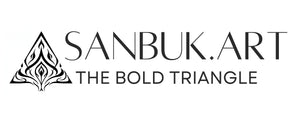Sirvan Kanaani
He didn’t want to be a painter, yet here he is. And he’s turned out to be a good one! Sirvan was into calligraphy, even as a kid. He wanted to grow up and be a calligrapher. Until the age of 15 he would use any piece of paper he could get his hands on, even campaign posters, to practice his calligraphy skills. He chose art in high school, but in his small hometown they didn’t teach calligraphy. He chose painting and practiced zealously, as he’d practiced calligraphy, and had his first exhibition at the age of 18.

Siravan gets his inspiration from the life that surrounds him. The people, the environment and the colors. Strokes of the brush mix human figures and nature, sometimes making them one. He sees himself more as an observer of human ascent of fall. The mesmerizing compositions realize frozen postures of humans and nature, of human figures and adobe houses, of horses and trees. Sirvan is there to capture and retell the moment. He is there to report.
Each painting is an expedition for him. It starts with a stroke of the brush, as if it’s a conversation with the canvas. The conversation is fluid; it’s a stream of consciousness that continues into the creation of an artwork. The result may as well be something not originally intended. It may be put away or further understanding of the artist’s surroundings. The litmus test is a form that is the vessel for the dialog. The dialog takes place in solitude, without any bystanders or additional interlocutors. The result though projects an idea and needs to be able to further the communication.

Sirvan doesn’t believe he is an observer and interpreter of everyday life, so he gets inspired by it to create a work of art. On the contrary, he is part of that collective life, within the context of modern life’s paradigms, and communicates with others.
His paintings are fluid and full of motion as is life. Individual colors come to life via the painting and project a collective identity. Sometimes it is hard to decide if it was the artist who decided where to land the stroke of brush and position a certain color. Or more likely we are just watching a movement in a rhythmic tango. Yes, his paintings are tango!
Solo Exhibitions:
- 2001 Untitled, Ershad Art Gallery
- 2002 Untitled, Ershad Art Gallery
- 2005 Untitled, Kurd House Gallery
- 2005 Untitled, Atbin Art Gallery
- 2013 Untitled, Ershad Art Gallery
- 2014 Stuck, Ershad Art Gallery
- 2014 Untitled, Vaali Art Gallery
- 2015 Untitled, Ershad Art Gallery
- 2016 Untitled, Vaali Art Gallery
- 2017 The Anxiety, Honar Art Gallery
- 2018 Daaristaan, Golestan Art Gallery
- 2019 Charw, Soureh Art Gallery
Group Exhibitions:
- 2000 Western Iran Youth Festival, Ershad Art Gallery
- 2002 Collective Students, Ershad Art Gallery
- 2004 Two Artists, Erashad Art Gallery
- 2005 Nature As Seen by Eastern Artists, Saba Art Gallery
- 2005 Deeper Depression, Atbin Art Gallery
- 2006 Progressive Kurd Artists, Saba Art Gallery
- 2008 Untitled, Sheen Group, Ershad Gallery
- 2010 Young Artists, Ameneh Souwreh Art Gallery, Suleymanieh
- 2011 Culture Week Group Exhibition, Cultural Heritage Art Gallery
- 2012 Tehran Art Fair, Association of Iranian Artists, Saba Art Gallery
- 2013 First Annual Exhibition of Kurdistan, Soureh Art Gallery
- 2014 International Exhibition of Kurdish Artists, Diyarbekir, Turkey
- 2015 The Seven Views, Niavaran Cultural Center
- 2015 Annual Exhibition of Association of Iranian Artists, Iranian Artists Forum
- 2016 Beyond Abstract, Kerman Art Gallery
- 2016 Untitled, Iranian Artists Forum
- 2017 Repeating From A Different Perspective, Vaali Art Gallery
- 2018 Steps of Colors, Ameneh Souwreh Art Gallery, Suleymanieh, Iraqi Kurdistan
- 2018 One Frame, Two generations of Modernist Painters, Didi Art Gallery
- 2021 The Artist’s Legacy, Laleh Art Gallery
Click Here to Explore This Artist's Artworks
- Choosing a selection results in a full page refresh.







